Hobbywing XeRun Axe Handleiding
Hobbywing
Radiografisch bestuurbaar speelgoed
XeRun Axe
Bekijk gratis de handleiding van Hobbywing XeRun Axe (2 pagina’s), behorend tot de categorie Radiografisch bestuurbaar speelgoed. Deze gids werd als nuttig beoordeeld door 76 mensen en kreeg gemiddeld 4.3 sterren uit 38.5 reviews. Heb je een vraag over Hobbywing XeRun Axe of wil je andere gebruikers van dit product iets vragen? Stel een vraag
Pagina 1/2

01
Disclaimer
03
Features
02
Warnings
04
Specifications
05
Connections
CA UT IONS
Thank you for purchasing the HOBBYWING’s XERUN AXE Brushless
System! Brushless power systems can be very dangerous. Any
improper use may cause personal injury and damage to the product
and related devices. We strongly recommend reading through this
user manual before use. Because we have no control over the use,
installation, or maintenance of this product, no liability may be
assumed for any damage or losses resulting from the use of the
product. We do not assume responsibility for any losses caused by
unauthorized modifications to our product. We, HOBBYWING, are
only responsible for our product cost and nothing else as result of
using our product.
AT T ENT ION
AT T ENT ION
Please make sure that the two arrows align when connecting, otherwise you may damage the inner part of the connectors and cause the power system to function
abnormally. Remember, never connect/disconnect them forcibly.
This is an extremely powerful brushless motor system. For your safety and the safety of those around you, we strongly recommend removing your pinion gear before
performing calibration and programming functions with this system, and keeping wheels in the air when you turn on the ESC.
AT T ENT ION
• The first FOC (Field-oriented Control) brushless power system for rock crawlers will provide the very powerful low rpm torque compared to standard sensored brushless power systems
and brushed power systems. This also translates to higher efficiency and longer runtimes.
• The chip-type magnetic encoder inside the motor guarantees consistency between three phases’ signals and always outputs the pure and precise signals indicating the rotor position.
• The waterproof and dust-proof design (*IP67 standards) allows the AXE brushless power system to be used in all weather & track conditions without any issue of damage caused to the
system from water or dust. Damage to the vehicle caused by water, mud, or conditions should be monitored closely when running in muddy, wet, or adverse conditions.
• Intelligent torque output & speed closed-loop control for easy control, and consistent motor RPM under all loads.
• The adjustable drag brake & drag brake rate control with the maximum drag brake of up to 200% (that’s nearly twice the drag brake of standard brushless power systems) can provide
unprecedented parking capacity on slopes, with no jerky stops.
• The innovative built-in Bluetooth connectivity allows users to read ESC data or update ESC firmware via a smart phone (installed with the HW LINK app).
• The motor with 4 poles & 12 magnets, featuring Hobbywing’s “staggered pole” patent has zero cogging effect & torque ripple. It can work smoothly at low speeds. This greatly improves
the maneuverability of rock crawlers at low speeds.
• The new sensor harness, which features the plug-and-screw design, has a silicon O ring inside. The new design & O ring not only provide firm connection between motor and ESC but
solve “waterproof” challenge for sensor ports.
• Advanced and secure electronic switch features a waterproof, dust-proof and shock-resistant design.
• Multiple protections: low-voltage cutoff, thermal, fail safe (throttle signal loss), motor lock-up, over current, and battery reversal.
1. Cooling Fan Installation (Optional)
When pairing the ESC with a 550 motor, we recommend installing the matching cooling fan. The cooling fan can be powered by the receiver.
2. Motor Wiring
The XERUN AXE brushless ESC only supports the XERUN AXE series of FOC brushless motors. The Axe ESC it cannot be paired with any other type of motor. The Axe Motor, cannot be
used with any other type of ESC.
There is strict wiring order from the ESC to the motor, the three A/B/C ESC wires must connect to the three A/B/C motor wires correspondingly. Next, connect the ESC sensor wire to the
motor sensor wire. Never change the order of your motor wires or damage will occur.
3. Receiver Wiring
The throttle control cable on the ESC has to be plugged into the throttle (TH) channel on the receiver. The throttle control cable (the Red wire) provides an output voltage of 6V/7.4V to
the receiver and steering servo, hence, no separate battery can be connected to the receiver. Improper wiring of any external BEC, or battery pack will result in damage to your ESC.
4. Battery Wiring
Proper polarity is essential. Please ensure positive (+) connects to positive (+), and negative (-) connects to negative (-) when plugging in the battery! When reverse polarity is applied to
the ESC from the battery, it will not function.
06
ESC Setup
Set the Throttle Range - ESC Calibration - Radio Setup
1
In order to make the ESC match the throttle range, you must calibrate it when you begin to use a new ESC. If you install a new radio system, or make changes to your throttle/brake values in
your transmitter, you must redo the ESC Calibration Process.
Failure to calibrate the ESC to your radio system will result in the ESC not working correctly.
We strongly recommend activating the “Fail Safe” function of the radio system and set it (F/S) to “Output OFF” or set its value to the “Neutral Position” to ensure the motor can be stopped
when there is no signal received from the transmitter.
About setting the throttle range, let’s take Futaba
TM
transmitter as an example, however basic walk through applies to any and all radios.
Power On/Off & Warning Tones
2
1) Power ON/OFF:
(Start with the ESC turned off), press the ON/OFF button to turn on the ESC;
(start with the ESC turned on) press and hold the ON/OFF button to turn off the ESC.
2) Warning Tones: Turn on the ESC in the normal way (that is to turn it on without holding the SET button); the motor will beep the number of LiPo cells you have plugged in.
For example, 3 beeps indicate a 3S LiPo.
Programmable Items
3
1. Cutoff Voltage
Low Voltage Cutoff for LiPo Protection. This item is mainly for preventing the LiPo pack from over-discharge. If the low-voltage cutoff protection is enabled, the ESC will monitor the battery
voltage all the time and gradually reduce the output to 50% (in 3 seconds) and cut it off 10 seconds later when the voltage goes below the cutoff threshold. The Red LED will flash a single
flash that repeats ( -, -, -....) when the ESC enters the low-voltage cutoff protection. The ESC will not cut off the power when the voltage is low if the low-voltage cutoff protection is ☆ ☆ ☆
disabled. We don’t recommend setting the “Cutoff Voltage” to “Disabled” when using a LiPo pack, otherwise, the battery will be damaged due to over-discharge.
• NiMH - For a NiMH pack, we recommend setting this item to “Disabled”.
• Voltage - The specific voltage values correspond to “Low/Intermediate/high” are 3.0V/3.2V/3.4V per cell. Please note, due to a number of variables you may not see exactly these same
voltage values.
2. RPM/Throttle Matching
The speed/RPM will change when the vehicle encounters obstacles or terrain changes based on the loads (on the vehicle), so changing this setting (with the throttle input remains
unchanged) can change the resistance to maintain the speed/RPM.
With the throttle input remains unchanged, setting this item to “Low” allows you to have the kind of feeling that a brushed motor will bring you, then the speed/RPM will be significantly
influenced by the resistance change; setting it to “High” allows you to have a remarkable feeling of speed-governing, that is the speed will change seldom due to the resistance change and
the speed/RPM remains almost unchanged.
In simple terms, set it to “Low” if you like the feeling that a brushed motor will bring you or set it to “High” if you like a more stable speed/RPM when the throttle input remains
unchanged, (it’s “Intermediate” by default, ) so please set it as per your preference.
3. Max. Forward Force
It’s the force when throttle trigger is at the full throttle position. It’s adjustable among 25%, 37.5%, 50%, 62.5%, 75%, 87.5% and 100% (by default). You can lower down the value for
better driving feel/control when you drive a crawler (simulation model) over difficult terrains (and don’t have any requirement against the maximum speed).
4. Max. Reverse Force
The reverse force of the value will determine its speed. For the safety of your vehicle, we recommend using a low amount.
5. Turbo Timing
This item is adjustable from 0 degree to 10 degrees, the corresponding turbo timing (you set) will initiate at full throttle. It’s usually activated on long straightaway and makes the motor
unleash its maximum potential. Turbo timing adds “RPM” at full throttle.
6. Turbo Delay
When “TURBO DELAY” is set to “INSTANT”, the Turbo Timing will be activated when throttle trigger is moved to the full throttle position. When other value is applied, you will need to hold
the throttle trigger at the full throttle position (as you set) till the Turbo Timing initiates.
7. Drag Brake Force
It is the braking power produced when the throttle is at the neutral position. (Attention! Drag brake will consume more power and heat will be increased, apply it cautiously.). Higher drag
brake means stronger hold or hill brakes.
8. Drag Brake Rate
It’s the rate at which the drag brake increases to the preset value. This feature slows down how rapidly the ESC applies brakes. Lower values are slower and prevent sudden stops or jerky
stopping movements. You can choose the drag brake rate from level 1 (very soft) to level 9 (very aggressive).
In Auto mode, the ESC adjusts the brag brake rate automatically as per the current speed. The higher the current speed, the lower the drag brake rate (when releasing the throttle trigger to
the neutral position); the lower the current speed, the higher the drag brake rate. It can not only help prevent vehicle from flipping over or the drivetrain from damage due to the rapid
intervention of drag brake when driving at a high speed but also guarantee the sensitive control feel when driving at a low speed.
9. Neutral Range
As not all transmitters have the same stability at “neutral position”, please adjust this parameter as per your preference. You can adjust to a bigger value when this happens. The neutral
range is the “dead zone” or “dead band” of the throttle/brakes. If you notice inconsistent drag brakes, you would increase your neutral range value.
10. Start Mode/(Punch)
You can choose the punch from level 1 (very soft) to level 9 (very aggressive). This feature is very useful for preventing tires from slipping during the starting-up process. In addition, “level
7” and “level 9” have strict requirement on battery’s discharge capability. It may affect the starting-up if the battery discharges poorly and cannot provide large current in a short time. The
car stutters or suddenly loses power in the starting-up process indicating the battery’s discharge capability is not good, and you need to reduce the punch or reduce the pinion gear size.
11. BEC Voltage
Option 1: 6.0V
It’s applicable to ordinary servos. Do not use this option with high voltage servos; otherwise your servos may not function normally due to insufficient voltage.
Option 2: 7.4V
It’s applicable to high voltage servos. Do not use this option with ordinary servos; otherwise your servos may be burnt due to high voltage.
12.Motor Rotation
This feature allows the changing of the motor’s forward direction. To check, look at the motor with the shaft facing you. If the motor spins counter clockwise if this item is set to CCW; the
motor spins clockwise if set to CW. The drive train of your chassis will determine what direction motor you should use. Some vehicles use normal or CCW rotation, other vehicles use CW or
backwards rotation motors.
ESC Programming & Firmware Upgrade - The Axe ESC is Only Adjustable using the HW Link App and a Bluetooth enabled Smart Phone
4
1) Program your ESC with a smart phone (installed with the HW LINK app)
• Download and install the Hobbywing’s official app “HW LINK” on your smart phone. For smart phones with the iOS operating system, please search “Hobbywing” in the App Store; for
smart phones with the Android operating system, search “Hobbywing” in the Google Play or download it from our website or scan the following QR code to download it.
• Connect a battery to the ESC and turn it on, then open the Hobbywing official app“HW LINK” on your smart phone.
It will ask if you want to connect “Bluetooth” or “WiFi” the first time when you open the app; at this point, please select “Bluetooth”. You need to change the connection to
“Bluetooth” after using the “WiFi” connection, you can click “Settings” (on the home page) and then “Select the connecting mode” to change the connection.
A list of Bluetooth devices will pop out when you click the ESC icon on the upper right corner, then select the ESC you want to program to establish the Bluetooth connection between
the ESC and smart phone. (Note: the default name & password of the Bluetooth device are HW-BLE01 & 888888 respectively.)
• Click “Parameters” (on the home page) to adjust the ESC parameters, click the ESC icon on the upper right corner to disconnect the Bluetooth connection between the ESC and smart
phone after completing and saving the adjustments.
2) Firmware Upgrade with a smart phone (installed with the HW LINK app)
• Download and install the Hobbywing’s official app “HW LINK” on your smart phone.
• As you enter the app, click Settings→About→Check for updates to ensure that the database and software version of your ESC are the latest.
• Connect a battery to the ESC and then turn it on, open the “HW LINK” app on your smart phone, a list of Bluetooth devices will pop out when you click the ESC icon on the upper right
corner, then select the ESC (Bluetooth device) you want to program to establish the Bluetooth connection between the ESC and smart phone.
(Note: the default name & password of the Bluetooth device are HW-BLE01 & 888888 respectively.)
• Click “Firmware upgrade” and then “Select the target version” to select the firmware version you need, and then click “Update” to upgrade your ESC. After the upgrade, you can adjust
the parameters via “Parameters” and click the ESC icon on the upper right corner to disconnect the Bluetooth connection between the ESC and smart phone after saving the adjustments.
• During the upgrade process, please ensure that the network connection is stable and do not upgrade your ESC at any place with strong interference.
In addition, please ensure that the smart phone is fully charged and the battery connected to the ESC still has sufficient power and it’s firmly connected to the ESC.
Do not disconnect the battery during the upgrade process, as that may cause the ESC to get damaged or be unable to function.
• When connecting the Bluetooth device (your ESC), please ensure the connection between the ESC sensor wire and the motor sensor wire is normal, otherwise the
Bluetooth device cannot be connected and programmed.
AT T ENT ION
07
Explanations for Different Status LEDs
08
Trouble Shooting
Factory Reset
5
• Restore the default values (ESC parameters & Info about the Bluetooth module) with the SET button
Turn on the ESC, press and hold the Set button for over 3 seconds.
Pressing and holding the SET button for over 3 seconds at any time when the throttle stick is at the neutral position (except during the ESC calibration or programming), can
factory reset your ESC. The Red & Green LEDs flash at the same time indicating the factory reset is successful. The default values only take effect after you turn the ESC off and
then on again.
Attention! This method will also factory reset the Bluetooth device.
• Restore the default values (only the ESC parameters) with a smart phone (installed with the HW LINK app)
After entering the app and establishing the Bluetooth connection between the ESC and smart phone, click “Factory Reset” in “Parameters” to factory reset your ESC.
After that, please re-calibrate the throttle range.
Automatic Motor Pairing (Optional)
6
You must do the “automatic motor pairing” (as explained below) when any of the following situations occurs:
1) Updated the ESC firmware,
2) Issues like loose rear endplate, severe impact, or abnormal heat (during the operation) abnormal power output occurs to the motor,
Steps of “Automatic Motor Pairing”
Step1: Unplug the throttle wire from the receiver, and then remove the pinion gear (or you can hold the vehicle in the air and remove the wheels, but the effect won’t be that good);
Step2: Connect a battery (to the ESC), turn it on, press and hold the SET button for 3 seconds after it completes the self test to enter the “automatic motor pairing”, the motor
will spin a while during the process.
Step3: The ESC will automatically re-start and beep out the number of the LiPo cells you’ve plugged in after the pairing completes, after that, please re-plug the throttle wire into
the receiver, and then the power system will be ready.
Note: For version 01-00.1.12 & previous versions of firmware, the time for pressing and holding the SET button is 10 seconds; the ESC won’t re-start automatically,
because the electrical parameters it needs to read are limited.
1. During the Starting-up Process
• The Red LED keeps flashing rapidly indicating the ESC doesn’t detect any throttle signal or the neutral throttle value stored on your ESC may be different from the current value stored
on the transmitter. - Redo the ESC calibration Process if your ESC is flashing and not working.
• The Green LED flashes “N/ (number of)” times indicating the number of LiPo cells you have plugged in.
2. In Operation - What lights you should see.
• The Red & Green LEDs go out when the throttle trigger is in throttle neutral zone.
• The Red LED turns on solid when your vehicle runs forward. The Green LED will also come on solid when pulling the throttle trigger to the full (100%) throttle endpoint and setting the
“Max. Forward Force” to 100%.
• The Red LED turns on solid when you brake the vehicle, the Green LED will also come on solid when pushing the throttle trigger to the full brake endpoint and setting the
“Max. Reverse Force” to 100%.
3. Error or Warning LED CodesN
• The Red LED flashes a short, single flash that repeats (☆ ☆ ☆, , ) indicating the low voltage cutoff protection is activated.
• The Green LED flashes a short, single flash that repeats (☆ ☆ ☆, , ) indicating the ESC thermal protection is activated.
• The Green LED flashes a short, double flash that repeats ( ) indicating the motor thermal protection is activated. ☆☆ ☆☆ ☆☆, ,
• The Green and Red LEDs flash a short, double flash that repeats ( ) indicating the power system stops functioning due to “sensor issue”. In that case, please check if ☆☆ ☆☆ ☆☆, ,
the ESC sensor wire has been firmly connected to the motor sensor wire before resuming the operation.
• Ensure all wires and connections are well insulated before connecting the ESC to related devices, as short circuit will damage your ESC.
• Ensure all devices are well connected to prevent poor connection that may cause your vehicle to lose control or other unpredictable issues such as damage to the device.
• Read through the manuals of all power devices and chassis and ensure the power configuration is correct before using this unit.
• Please use a soldering iron with the power of at least 60W to solder all input/output wires and connectors.
• Do not hold the vehicle in the air and free rev it to full throttle, as rubber tires can “expand” to extreme size or even crack to cause serious injury, or damage to your system can occur.
• Never allow the ESC & motor temperatures (external temp.) go above 90 /194 , as high temperature may cause damage to both the ESC and motor.
• Always disconnect the batteries when your vehicle is not in use. The ESC will continue to drain current if it is connected to batteries (even if the ESC is turned off). Extended battery
connection (Even when off) will cause batteries to completely discharge and result in damage to batteries or ESC. This WILL NOT be covered under warranty.
• The ESC must be Calibrated or setup to your radio system before normal operation.
USER MANUAL
XERUN AXE Brushless System
PN
Cont./Peak Current
Motor Type
Applications
LiPo/NiMH Cells
BEC Output
Connectors
Size/Weight
ESC Programming
30112100 30112101
(V1.1)
60A/360A
Only the XERUN AXE Series
1/10th Rock Crawler
2-3S LiPo, 6-9S NiMH
6V/7.4V Switchable, Continuous Current of 4A (Switch-mode)
Input/Output Ends: No Connectors
47.4 x36.2x24.6mm/ 82g
Via an iOS or Android smart phone (installed with the HW LINK app)
Model XERUN AXE Brushless ESC
(V1.1)
30401250
30401251
30401252
30401351
30401350
XERUN AXE540-1200KV-FOC
XERUN AXE540-1800KV-FOC
XERUN AXE540-2300KV-FOC
XERUN AXE550-2700KV-FOC
XERUN AXE550-3300KV-FOC
PN Motor Model
1200KV
1800KV
2300KV
2700KV
3300KV
KV Rating
(No-load)
2-3S
2-3S
2-3S
2-3S
2-3S
LiPos
0.133
0.055
0.037
0.016
0.012
Resistance
0.9A
1.2A
1.5A
2.7A
3.8A
No-load
Current
Motor Diameter
Length
Shaft Diameter
Length Poles
175g
173g
173g
289g
284g
Weight
36.0/48.8mm
1.42/1.92in
3.175/15.5 mm
0.125/0.61in
36.0/66.2mm
1.42/2.61in
5/16.0 mm
0.197/0.63in
4
Please ensure that the ESC sensor wire has been plugged into the motor sensor wire and screwed up, otherwise the water may get inside and damage the ESC or motor.
Note: those black-and-white options are default values.
Trouble(s) Solution(s)Possible Causes
1. No power was supplied to the ESC.
2. The ESC switch was damaged.
1. Check if all ESC & battery joints or connections have been well
soldered or firmly connected.
2. Replace the switch.
The ESC was unable to start the status LED, the motor after
it was powered on.
1. The ESC didn’t detect any throttle signals.
2. The neutral throttle value stored on your ESC is different from
the one stored on the transmitter.
1. Check if the throttle wire is reversely plugged in or in the wrong
channel and if the transmitter is turned on.
2. Re-calibrate the throttle range after you release the throttle trigger
to the neutral position.
After the ESC was powered on and finished LiPo detection,
the GREEN LED flashed N times, and then the RED LED flashed.
The default motor direction didn’t match the chassis. Set the motor direction/rotation to the other option via the HW LINK app.
The vehicle ran backward when you pulled the throttle trigger
towards you.
1. The receiver was influenced by some foreign interference.
2. The ESC entered the LVC protection.
3. The ESC entered the ESC thermal protection.
1. Check all devices and try to find out the possible causes, and check
the transmitter’s battery voltage.
2. The Red LED keeps flashing indicating the LVC protection is activated,
please replace the battery.
3. The Green LED keeps flashing indicating the ESC thermal protection is
activated. Please let it cool again before using the ESC again.
The motor suddenly stopped or significantly reduced the
output in operation.
1. “Sensor wire connection” issue.
2. ESC problem.
1. Check if the ESC & motor sensor wires are damaged and re-connect
them and re-start the ESC after confirming that there is no sensor issue.
2. Contact the dealer for customer service.
The vehicle couldn’t be started or stopped halfway, and the
Red & Green LEDs flashed a short, double flash that repeated.
1. The neutral position on the transmitter was not stable,
so signals were not stable either.
2. The ESC calibration was not proper.
1. Replace your transmitter.
2. Re-calibrate the throttle range or fine tune the neutral position on
the transmitter.
The car ran forward/backward slowly when the throttle trigger
was at the neutral position.
1. The ESC throttle cable wasn’t plugged in the correct channel
on the receiver.
2. The ESC throttle cable was reversely plugged in.
3. The throttle range stored on your ESC is different from the
one stored on the transmitter.
1. Plug the throttle cable into the throttle (TH) channel on your receiver.
2. Plug in the throttle cable properly by referring to relevant mark shown
on your receiver.
3. If you’re using a Futaba transmitter, set the throttle to “REV”;
if other transmitters, please try to keep the ratio between “Forward”
and “Reverse” on the throttle channel at 5:5.
When pressing the SET button to set the throttle neutral
position, the GREEN LED didn’t flash and no beep was emitted,
or you were unable to set the full throttle endpoint and the full
brake endpoint after the neutral position was accepted.
The battery voltage was beyond the normal range. Check if the battery voltage is within the regulated range.
The ESC was unable to start the motor but beeped
“B-B-, B-B, B-B-” (the time interval was 1s) and the Green LED
on the ESC flashed.
Move the throttle trigger to the neutral position and
press the SET button.
3. Set the neutral point, the full throttle endpoint and the full brake endpoint.
• Leave the throttle trigger at the neutral position, press the SET button, the RED LED dies out and the GREEN LED flashes 1 time and the motor beeps 1 time to accept the neutral position.
• Pull the throttle trigger to the full throttle position, press the SET button, the GREEN LED blinks 2 times and the motor beeps 2 times to accept the full throttle endpoint.
• Push the throttle trigger to the full brake position, press the SET button, the GREEN LED blinks 3 times and the motor beeps 3 times to accept the full brake endpoint.
4. The motor can be started 3 seconds after the ESC/Radio calibration is complete.
The Green LED
flashes once and
motor emits
“Beep” tone.
Move the throttle trigger to the end position of forward
and press the SET button.
The Green LED flashes
twice and motor emits
“Beep-Beep”
tone.
Move the throttle trigger to the end position of
backward and press the SET button.
The Green LED flashes
three times and motor
emits
“Beep-Beep-
Beep” tone.
1. Turn on the transmitter, set parameters on the throttle channel like “D/R”, “EPA” and
“ATL” to 100% (for transmitter without LCD, please turn the knob to the maximum)
and the throttle “TRIM” to 0 (for transmitter without LCD, please turn the
corresponding knob to the neutral position). For FutabaTM radio transmitter, the
direction of throttle channel shall be set to “REV”, while other radio systems shall be set
to “NOR”. Please ensure the “ABS braking function” of your transmitter must be
DISABLED.
Press and hold the
SET button
Press the
ON/OFF
button
Release the SET
button once the LED
flashes.
2. Start with transmitter on and the ESC turned off but connected to a battery. Holding the SET button and press the ON/OFF button to turn on the ESC, the RED LED on the ESC starts to
flash (Note 1 the motor beeps at the same time), and then release the SET button immediately. (The ESC will enter the programming mode if the SET button is not released in 3 seconds,
then you need to restart from step 1.)
Note 1 Beeps from the motor may be low sometimes, and you can check the LED status instead.:
XERUN AXE540-1200KV-FOC
XERUN AXE540-1800KV-FOC
XERUN AXE540-2300KV-FOC
XERUN AXE550-2700KV-FOC
XERUN AXE550-3300KV-FOC
XERUN AXE Brushless ESC V1.1
XERUN AXE Brushless ESC V1.1
XERUN AXE Brushless ESC V1.1
System V1.1
System V1.1
PN COMBO
38020251
38020252
38020253
38020277
38020254
20190510
Instant
Programmable Item
Cutoff Voltage
RPM/Throttle Matching
Max. Forward Force
Max. Reverse Force
Turbo T iming
Turbo Delay
Drag Brake Force
Drag Brake Rate
Neutral Range
Start Mode (/ Punch)
BEC Voltage
Motor Rotation
Option 1
Disabled
Low
25%
25%
Level 1
Level 1
6.0V
CCW
Item #
1
2
3
4
5
6
7
8
9
10
11
12
Option 2
Low
Intermediate
37.5%
37.5
0.1s
Level 2
Level 2
7.4V
CW
Option 3
Intermediate
High
50%
50%
0.2s
Level 3
Level 3
Option 4
High
62.5%
62.5%
0.3s
Level 4
Level 4
Option 5
75%
75%
0.4s
Level 5
Level 5
Option 6
87.5%
87.5%
0.5s
Level 6
Level 6
Option 7
100%
100%
Level 7
Level 7
Level 8
Level 8
Level 9
Level 9
9%-17%Adjustable (default: 10%)
50-200% Adjustable (default: 80%)
0-10° Adjustable (Step: 1°, default: 0°)
Option 8 Option 9
Auto
Option 10
XERUN AXE Brushless Motor
XERUN AXE Brushless ESC V1.1

Product specificaties
| Merk: | Hobbywing |
| Categorie: | Radiografisch bestuurbaar speelgoed |
| Model: | XeRun Axe |
| Kleur van het product: | Zwart |
| Gewicht: | 82 g |
| Breedte: | 47.4 mm |
| Diepte: | 36.2 mm |
| Hoogte: | 24.6 mm |
| Soort: | Radio-Controlled (RC) Model Parts |
| Correct gebruik: | Auto |
| Merkcompatibiliteit: | Alle merken |
| Aantal: | 1 |
| Veiligheidsfunties: | Waterbestendig |
| Upgraden van firmware mogelijk: | Ja |
| Compatibele batterij technologiën: | Lithium Polymer (LiPo), Nickel Metal Hydride (NiMH) |
| Maximale continue stroom: | 60 A |
| Type product: | ESC |
| AWG draad omvang: | 12 |
| Schaal: | 1:10 |
| Type elektronische toerentalregeling (ESC): | Borstelloos |
| Aansluiting type: | XT60 |
| Batterij elaminatorcircuit (BEC) continue stroom: | 4 A |
| Maximaal aantal cellen compatibele batterij: | 9 |
| Batterij elaminatorcircuit (BEC) uitgangsstroom: | 6 V, 7.4 V |
| Draadlengte: | 200 mm |
| Maximale reeks stroom: | 360 A |
| Compatibele batterijcellen minimumaantal: | 2 |
Heb je hulp nodig?
Als je hulp nodig hebt met Hobbywing XeRun Axe stel dan hieronder een vraag en andere gebruikers zullen je antwoorden
Handleiding Radiografisch bestuurbaar speelgoed Hobbywing

29 Maart 2025

29 Maart 2025

27 Maart 2025

27 Maart 2025

27 Maart 2025

27 Maart 2025

27 Maart 2025
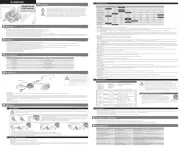
27 Maart 2025

27 Maart 2025
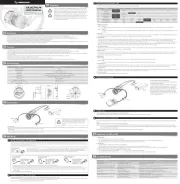
27 Maart 2025
Handleiding Radiografisch bestuurbaar speelgoed
- Flyzone
- Multiplex
- Jada
- SAB
- Joysway
- FlySky
- Vaterra
- Biltema
- HPI Racing
- Traxxas
- Graupner
- Amewi
- PowerBox Systems
- Spin Master
- Parrot
Nieuwste handleidingen voor Radiografisch bestuurbaar speelgoed
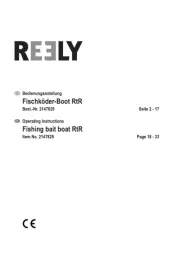
1 September 2025
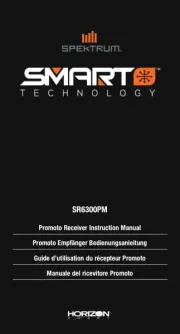
1 September 2025
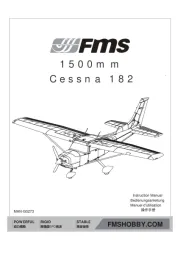
12 Augustus 2025
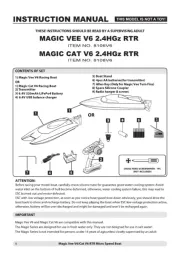
28 Juli 2025
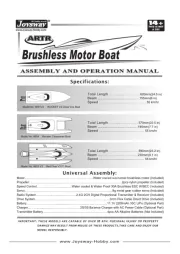
28 Juli 2025
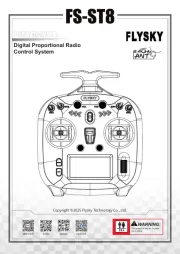
28 Juli 2025
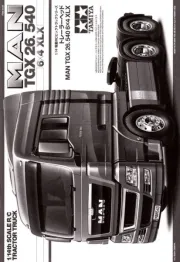
9 Juli 2025
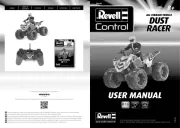
8 Juli 2025

8 Juli 2025
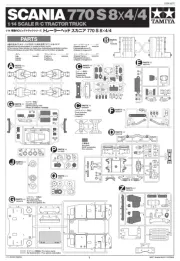
7 Juli 2025